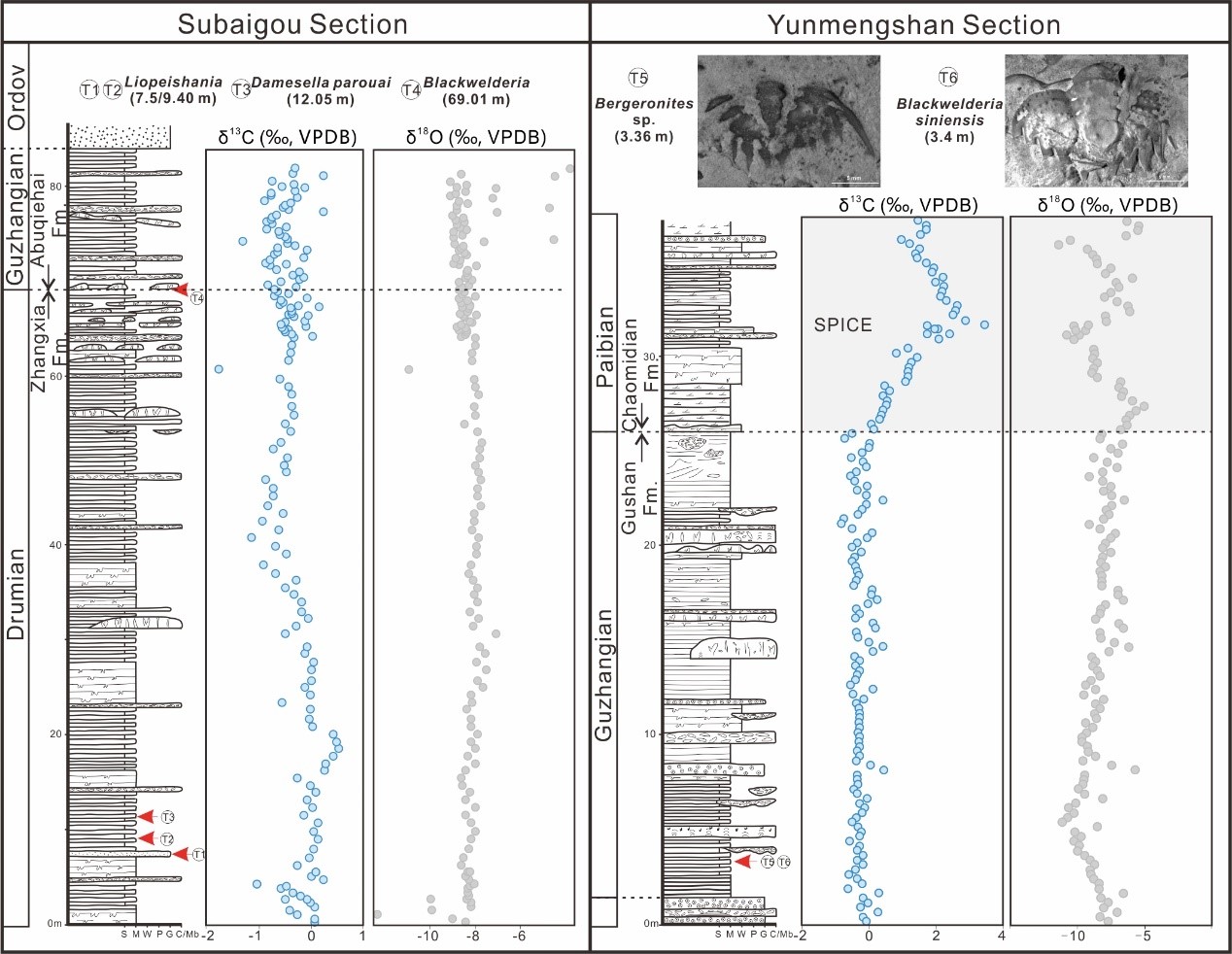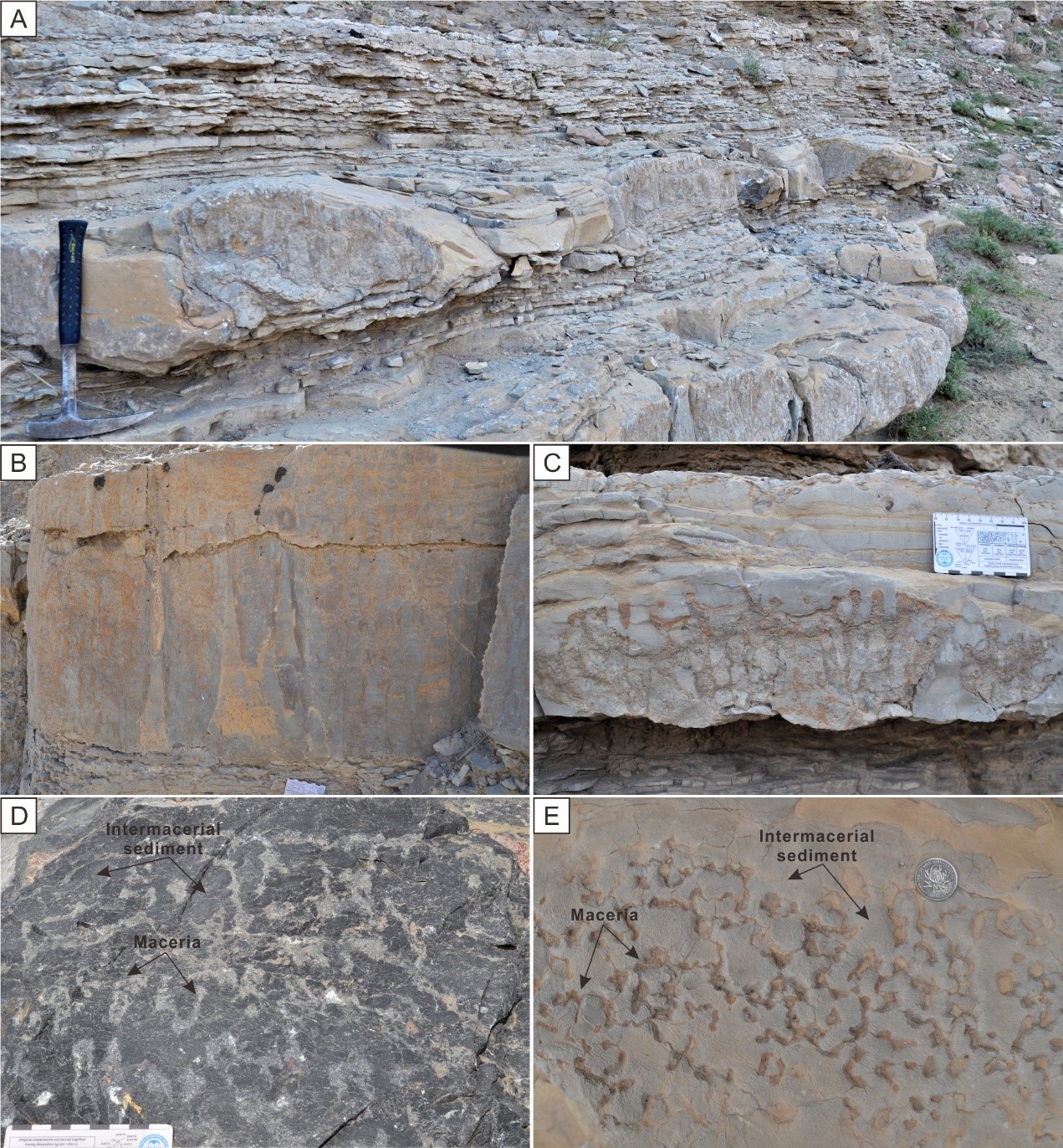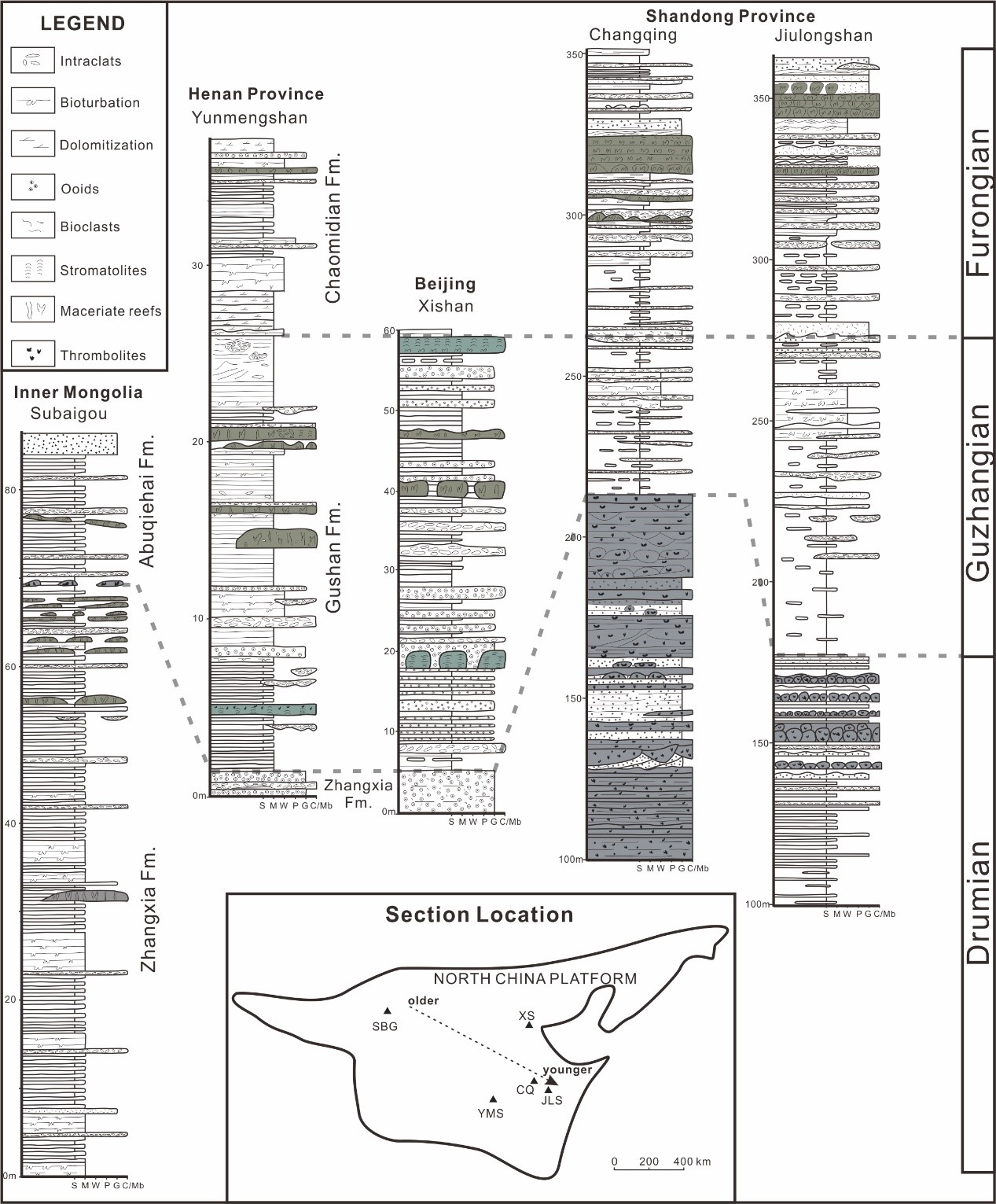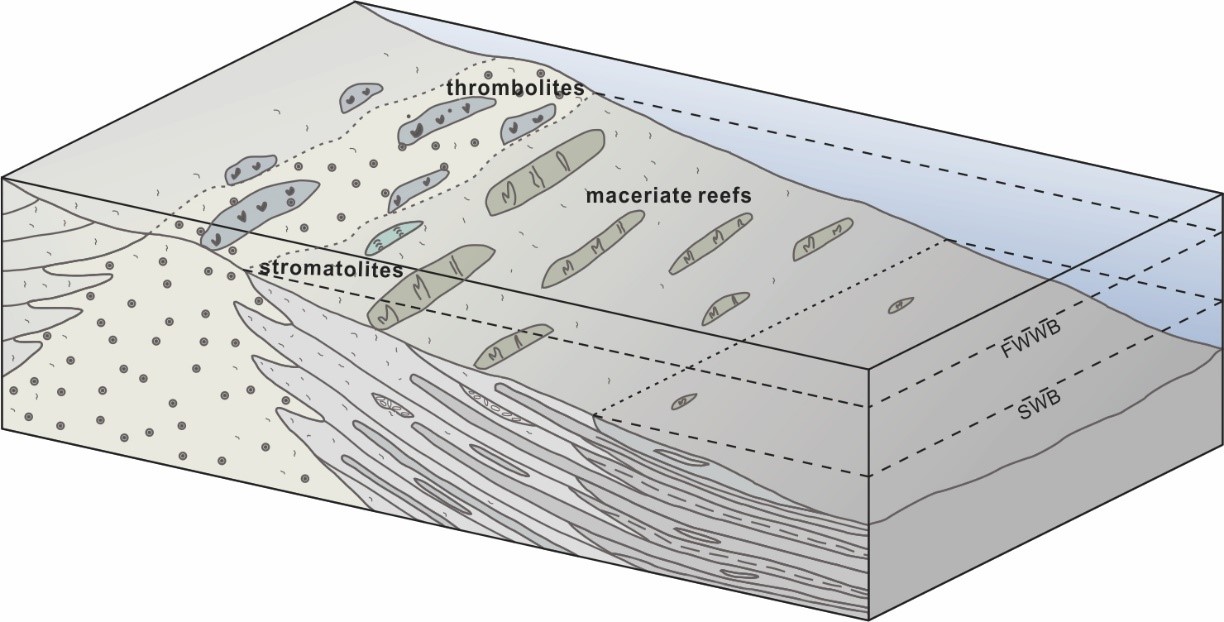The Cambrian marks a critical transition in the Earth’s history, including the explosive appearance of most phyla of invertebrate organisms, and it is also the longest period of the five major microbe–metazoan transitions during the Phanerozoic (MMTs). The Miaolingian to Furongian was marked by the transition of microbial reefs to the microbe–metazoan reefs with maze-like maceriate reefs.
Maceriate reefs are characterized by centimeter- to decimeter-scale branching microbial structures, which flourished during the Cambrian to Early Ordovician on Laurentia and Gondwana (the North China Platform). Formation of maceriate reefs has been attributed to specific biological factors owing to their time-restricted occurrences and sponge spicules within maceriate reefs, and paleoenvironmental factors such as marine redox conditions and sea-level fall. Thus, the timing and distribution of maceriate reefs, and the causes of their proliferation, are not fully understood.
Recently, a detailed study on sedimentary facies and the evolution of the maceriate reefs based on bio- and chemostratigraphic data for the Subaigou (Inner Mongolia) and Yunmengshan (Henan Province) sections by the Ph.D. student XIN Hao and his supervisor Prof. CHEN Jitao, along with Dr. GAO Biao from Nanjing Institute of Geology and Palaeontology, Chinese Academy of Sciences (NIGPAS), Prof. LI fei from Southwest Petroleum University, and Prof. Paul Myrow from Colorado College, USA. The study ispublished in the international journal Palaeogeography, Palaeoclimatology, Palaeoecology.
Based on detailed facies analysis, maceriate reefs in the Cambrian succession are subdivided into dendritic and columnar maceriate types, which are composed of sponges and microbial components. “We found that the occurrence of Cambrian maceriate reefs gradually becomes younger (Drumian to Jiangshanian) from the northwest to the southeast of the North China Platform.” Says XIN.
Prof. CHEN says, “The surrounded thin-bedded lime mudstone and marlstone alternations suggest that maceriate reefs formed in generally low-energy environments below fair-weather wave base, and the transgression form southeast margin may have played a major role in the diachronous development of the maceriate reefs.”
Reference: Xin, H., Chen, J.T.*, Gao, B., Li, F., Myrow, P. M., 2023. Spatio-temporal distribution of the Cambrian maceriate reefs across the North China Platform. Palaeogeography, Palaeoclimatology, Palaeoecology, 614, 111429. https://doi.org/10.1016/j.palaeo.2023.111429.

Fig.1 Carbonate carbon isotope (δ13Ccarb) data and trilobite records for the studied sections

Fig.2 The Cambrian maceriate reef

Fig.3 Spatio-temporal distribution of the Cambrian reefs

Fig.4 Schematic depositional model of the Cambrian reefs
Contact:
LIU Yun, Propagandist
Email: yunliu@nigpas.ac.cn
Nanjing Institute of Geology and Palaeontology, Chinese Academy of Sciences
Nanjing, Jiangsu 210008, China
Download:
